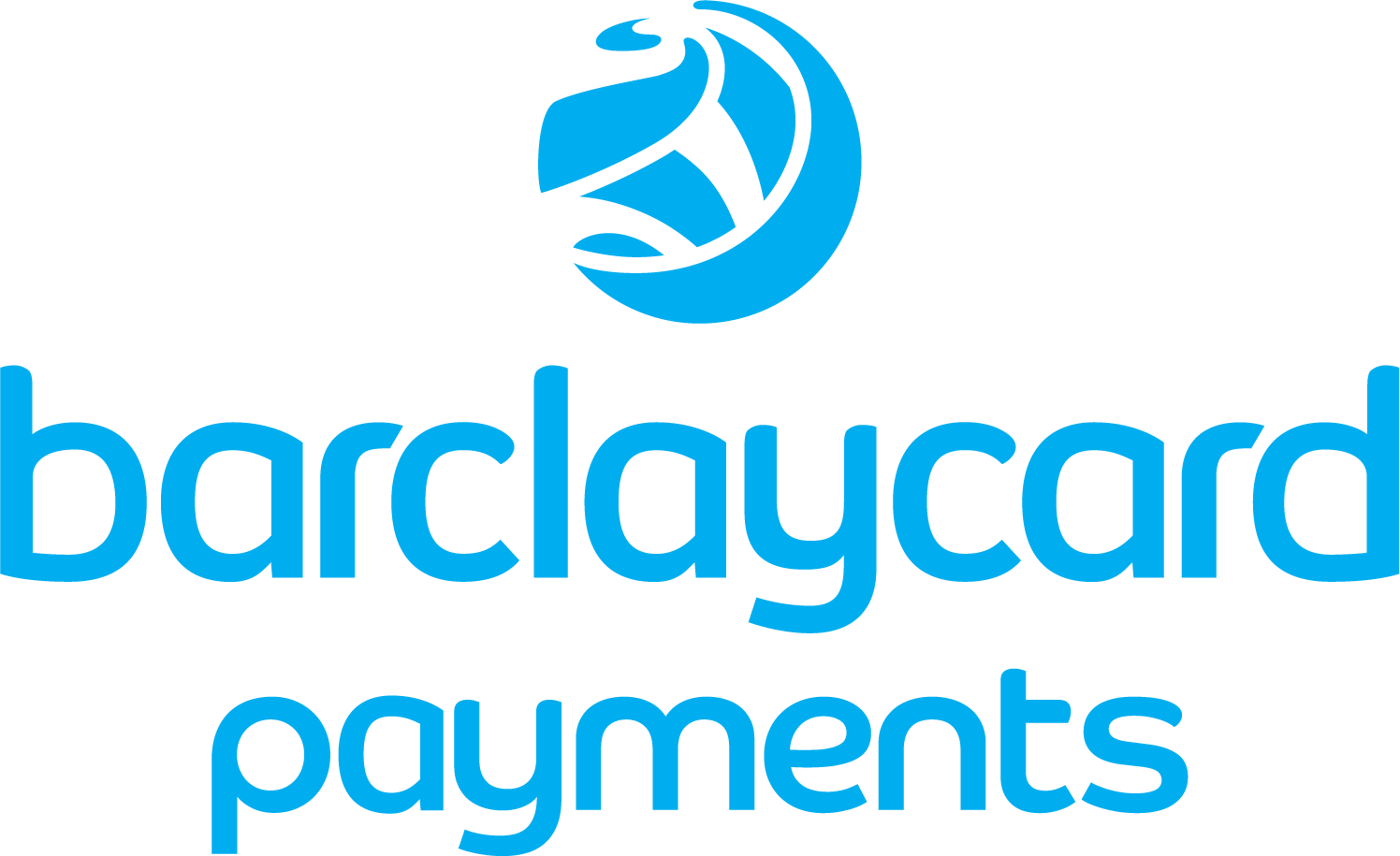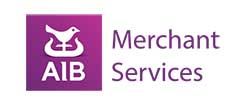- Accept card payments – lowest rates from 0.27%
- Keep your card processing fees to a minimum
- Direct access to the UK’s leading card processing banks
- We ensure your rates always remain competitive
No spam emails or calls
Choose from the payment methods then click Next
What's your turnover each month?
Enter the name of your company
Enter your company's postcode and contact number






Understanding the Process of Payment: A Comprehensive Guide
In today’s fast-paced digital world, the process of payment has evolved significantly, becoming more streamlined, secure, and efficient. Whether you’re a business owner, a service provider, or a consumer, understanding the intricacies of payment processing is crucial. This comprehensive guide will delve into the various aspects of payment processing, including payment gateways, payment processors, payment methods, and the role of financial institutions. We’ll also explore the security measures in place to protect transaction data and the costs associated with payment processing services.
Table of Contents
- Introduction to Payment Processing
- The Role of Payment Gateways and Payment Processors
- Different Payment Methods
- The Transaction Process: From Initiation to Settlement
- The Role of Financial Institutions in Payment Processing
- Payment Processing Systems and Technologies
- Security in Payment Processing
- Costs Associated with Payment Processing
- The Future of Payment Processing
- Conclusion
1. Introduction to Payment Processing
Payment processing is the backbone of any financial transaction, enabling the transfer of funds from a customer’s account to a business’s account. Understanding how payment processing work involves a series of steps that ensure the transaction is completed securely and efficiently. The process of payment begins when a customer initiates a transaction, either online or at a point of sale (POS), and ends when the funds are transferred to the merchant’s account.
1.1 The Importance of Payment Processing
Payment processing is essential for both businesses and consumers. For businesses, it allows them to accept payments from customers, which is crucial for maintaining cash flow and ensuring the sustainability of their operations. For consumers, it provides a convenient and secure way to make purchases, whether they’re using a credit or debit card, bank transfers, or alternative payment methods, including various digital payment options.
1.2 Key Players in Payment Processing
Several parties are involved in the payment processing ecosystem, including:
- Customer: The individual or entity making the payment.
- Merchant: The business or service provider receiving the payment.
- Payment Gateway: A service that authorizes and processes payments.
- Payment Processor: A company that handles the transaction process between the merchant and the financial institutions.
- Acquiring Bank: The bank that holds the merchant’s account and receives the funds. The acquiring bank handles approved transactions by sending them to the issuing bank for settlement, which eventually leads to the funds being deposited into the merchant’s account.
- Issuing Bank: The bank that issued the customer’s credit or debit card.
- Card Network: The network (e.g., Visa, MasterCard) that facilitates the transaction between the issuing and acquiring banks.
2. The Role of Payment Gateways and Payment Processors
2.1 Payment Gateways
A payment gateway is a technology that connects the merchant’s website or POS system to the payment processor. It acts as a bridge between the customer, the merchant, and the financial institutions involved in the transaction. The payment gateway encrypts the payment information, ensuring that the transaction details are transmitted securely.
2.1.1 How Payment Gateways Work
- Customer Initiates Payment: The customer enters their payment details (e.g., credit card information) on the merchant’s website or POS system.
- Encryption: The payment gateway encrypts the payment information to protect it from data breaches.
- Authorization Request: The payment gateway sends the encrypted payment information to the payment processor, which forwards it to the issuing bank for authorization.
- Authorization Response: The issuing bank checks the customer’s account status and either approves or declines the transaction. The response is sent back to the payment gateway.
- Transaction Completion: If the transaction is approved, the payment gateway notifies the merchant, and the funds are transferred to the merchant’s account.
2.2 Payment Processors
A payment processor is a company that handles the transaction process between the merchant and the financial institutions. It ensures that the transaction details are transmitted securely and that the funds are transferred from the customer’s account to the merchant’s account.
2.2.1 How Payment Processors Work
- Receiving Transaction Data: The payment processor receives the transaction data from the payment gateway.
- Forwarding to Issuing Bank: The payment processor forwards the transaction details to the issuing bank for authorization.
- Receiving Authorization Response: The payment processor receives the authorization response from the issuing bank and forwards it to the payment gateway.
- Settlement: Once the transaction is approved, the payment processor facilitates the transfer of funds from the issuing bank to the acquiring bank, which then deposits the funds into the merchant’s account.
3. Different Payment Methods
There are various payment methods available today, each with its own set of advantages and disadvantages. The choice of payment method can significantly impact the customer experience and the efficiency of the payment process.
3.1 Credit and Debit Cards
Debit and credit cards are among the most popular payment methods, offering convenience and security for both customers and merchants.
3.1.1 Credit Cards
Credit cards allow customers to make purchases on credit, meaning they can pay for goods and services at a later date. The issuing bank provides a line of credit to the customer, and the customer is required to repay the borrowed amount, often with interest.
3.1.2 Debit Cards
Debit cards, on the other hand, are linked directly to the customer’s bank account. When a customer makes a purchase using a debit card, the funds are immediately deducted from their account. This ensures that the customer only spends what they have, reducing the risk of overspending.
3.2 Bank Transfers
Bank transfers involve the direct transfer of funds from the customer’s bank account to the merchant’s account. This method is often used for larger transactions or when the customer does not have a credit or debit card.
3.2.1 Automated Clearing House (ACH)
The Automated Clearing House (ACH) is a network that facilitates electronic bank transfers. It is commonly used for direct deposits, bill payments, and other types of financial transactions. ACH transfers are typically slower than card payments but are often more cost-effective.
3.3 Digital Payments
Digital payments refer to any payment method that is conducted electronically, including the management of customer bank accounts for efficient processing. This includes mobile payments, online payments, and other electronic payment methods.
3.3.1 Mobile Payments
Mobile payments allow customers to make payments using their smartphones or other mobile devices. This can be done through mobile wallets (e.g., Apple Pay, Google Pay) or mobile banking apps.
3.3.2 Online Payments
Online payments are conducted over the internet, typically through a merchant’s website or an online payment platform. This method is convenient for customers who prefer to shop online and can include various payment options, such as credit cards, debit cards, and digital wallets.
3.4 Alternative Payment Methods
In addition to traditional payment methods, there are several alternative payment methods that are gaining popularity. These include:
- Cryptocurrencies: Digital currencies like Bitcoin and Ethereum that offer a decentralized and secure way to make payments.
- Buy Now, Pay Later (BNPL): A payment method that allows customers to make purchases and pay for them in installments over time.
- Prepaid Cards: Cards that are preloaded with a specific amount of money and can be used to make purchases until the balance is depleted.
4. The Transaction Process: From Initiation to Settlement
The transaction process involves several steps, from the moment the customer initiates the payment to the final settlement of funds in the merchant’s account. Understanding this process is crucial for both businesses and consumers.
4.1 Customer Initiates Payment
The transaction process begins when the customer initiates a payment. This can be done through various channels, such as a merchant’s website, a mobile app, or a point of sale (POS) system. The customer provides their payment details, such as their credit or debit card information, and authorizes the transaction.
4.2 Payment Gateway Encrypts Payment Information
Once the customer initiates the payment, the payment gateway encrypts the payment information to protect it from data breaches. This ensures that the transaction details are transmitted securely to the payment processor.
4.3 Payment Processor Forwards Transaction Details to Issuing Bank
The payment processor receives the encrypted payment information from the payment gateway and forwards it to the issuing bank for authorization. The issuing bank checks the customer’s account status to ensure that there are sufficient funds or available credit to complete the transaction.
4.4 Issuing Bank Approves or Declines the Transaction
The issuing bank reviews the transaction details and either approves or declines the transaction. If the transaction is approved, the issuing bank sends an authorization response back to the payment processor. If the transaction is declined, the customer is notified, and the transaction is not completed.
4.5 Payment Processor Notifies Payment Gateway of Authorization Response
The payment processor receives the authorization response from the issuing bank and forwards it to the payment gateway. The payment gateway then notifies the merchant of the transaction status.
4.6 Merchant Completes the Transaction
If the transaction is approved, the merchant completes the transaction by providing the goods or services to the customer. The payment processor then facilitates the transfer of funds from the issuing bank to the acquiring bank.
4.7 Acquiring Bank Deposits Funds into Merchant’s Account
The acquiring bank receives the funds from the issuing bank and deposits them into the merchant’s account. This completes the transaction process, and the merchant can now access the funds.
4.8 Transaction Settlement
Transaction settlement refers to the final transfer of funds between the issuing bank and the acquiring bank. This process typically takes a few days, depending on the payment method and the financial institutions involved.
5. The Role of Financial Institutions in Payment Processing
Financial institutions play a crucial role in the payment processing ecosystem. They facilitate the transfer of funds between the customer and the merchant, ensuring that the transaction is completed securely and efficiently.
5.1 Issuing Bank
The issuing bank is the financial institution that issued the customer’s credit or debit card. It is responsible for authorizing the transaction and ensuring that the customer has sufficient funds or available credit to complete the purchase.
5.1.1 Authorization Process
When a customer initiates a payment, the issuing bank receives the transaction details from the payment processor. The bank checks the customer’s account status and either approves or declines the transaction based on the available funds or credit limit.
5.1.2 Fraud Detection
The issuing bank also plays a crucial role in detecting and preventing fraudulent transactions. It uses advanced algorithms and machine learning techniques to identify suspicious activity and block unauthorized transactions.
5.2 Acquiring Bank
The acquiring bank is the financial institution that holds the merchant’s account. It is responsible for receiving the funds from the issuing bank and depositing them into the merchant’s account.
5.2.1 Acquiring Bank Deposits
Once the transaction is approved, the acquiring bank receives the funds from the issuing bank and deposits them into the merchant’s account. This process typically takes a few days, depending on the payment method and the financial institutions involved.
5.2.2 Merchant Services
In addition to processing payments, acquiring banks often provide a range of merchant services, including payment processing solutions, fraud prevention tools, and business financing options.
5.3 Card Networks
Card networks, such as Visa, MasterCard, and American Express, play a crucial role in facilitating transactions between the issuing bank and the acquiring bank. They provide the infrastructure that enables the secure and efficient transfer of funds.
5.3.1 Transaction Routing
Card networks are responsible for routing transaction data between the issuing bank and the acquiring bank. They ensure that the transaction details are transmitted securely and that the funds are transferred accurately.
5.3.2 Interchange Fees
Card networks charge interchange fees for each transaction processed through their network. These fees are typically paid by the acquiring bank to the issuing bank and are used to cover the costs of processing the transaction.
6. Payment Processing Systems and Technologies
Payment processing systems and technologies have evolved significantly over the years, enabling faster, more secure, and more efficient transactions. These systems play a crucial role in the payment processing ecosystem, ensuring that transactions are completed smoothly and securely.
6.1 Point of Sale (POS) Systems
Point of Sale (POS) systems are used by merchants to process transactions at physical locations. These systems typically include hardware, such as card readers and cash registers, as well as software that facilitates the transaction process.
6.1.1 How POS Systems Work
- Customer Initiates Payment: The customer presents their payment method (e.g., credit card, debit card) to the merchant.
- Payment Information is Captured: The POS system captures the payment information and sends it to the payment processor.
- Authorization Request: The payment processor forwards the transaction details to the issuing bank for authorization.
- Authorization Response: The issuing bank approves or declines the transaction and sends the response back to the POS system.
- Transaction Completion: If the transaction is approved, the POS system completes the transaction and provides a receipt to the customer.
6.2 Payment Processing Software
Payment processing software is used by merchants to manage and process transactions. This software can be integrated with the merchant’s website, mobile app, or POS system, enabling them to accept payments from customers.
6.2.1 Features of Payment Processing Software
- Transaction Management: Payment processing software allows merchants to manage and track transactions in real-time.
- Payment Gateway Integration: The software can be integrated with a payment gateway to facilitate secure transactions.
- Fraud Prevention: Many payment processing software solutions include fraud prevention tools to protect against unauthorized transactions.
- Reporting and Analytics: The software provides detailed reports and analytics on transaction data, helping merchants make informed business decisions.
6.3 Electronic Payment Systems
Electronic payment systems enable the transfer of funds electronically, without the need for physical cash or checks. These systems include online payment platforms, mobile payment apps, and digital wallets.
6.3.1 Online Payment Platforms
Online payment platforms, such as PayPal and Stripe, allow customers to make payments over the internet. These platforms typically support various payment methods, including credit cards, debit cards, and bank transfers.
6.3.2 Mobile Payment Apps
Mobile payment apps, such as Apple Pay and Google Pay, enable customers to make payments using their smartphones. These apps use near-field communication (NFC) technology to facilitate contactless payments at physical locations.
6.3.3 Digital Wallets
Digital wallets, such as PayPal and Venmo, allow customers to store their payment information securely and make payments online or in-store. These wallets can be linked to a customer’s bank account, credit card, or debit card.
7. Security in Payment Processing
Security is a critical aspect of payment processing, as it ensures that transaction data is protected from data breaches and unauthorized access. Payment processing systems and technologies incorporate various security measures to safeguard customer and merchant information.
7.1 Encryption
Encryption is a security measure that involves converting transaction data into a coded format that can only be deciphered by authorized parties. This ensures that the payment information is transmitted securely and cannot be intercepted by hackers.
7.1.1 SSL/TLS Encryption
Secure Sockets Layer (SSL) and Transport Layer Security (TLS) are encryption protocols that are commonly used to secure online transactions. These protocols create a secure connection between the customer’s browser and the merchant’s website, ensuring that the payment information is transmitted securely.
7.2 Tokenization
Tokenization is a security measure that involves replacing sensitive payment information, such as credit card numbers, with a unique identifier called a token. This token can be used to process the transaction without exposing the actual payment information, reducing the risk of data breaches.
7.2.1 How Tokenization Works
- Customer Initiates Payment: The customer enters their payment information on the merchant’s website or POS system.
- Token Generation: The payment gateway generates a token that represents the payment information.
- Token Transmission: The token is transmitted to the payment processor, which forwards it to the issuing bank for authorization.
- Transaction Completion: If the transaction is approved, the token is used to complete the transaction without exposing the actual payment information.
7.3 Fraud Detection and Prevention
Fraud detection and prevention are crucial aspects of payment processing security. Payment processing systems use advanced algorithms and machine learning techniques to identify and block fraudulent transactions.
7.3.1 Fraud Detection Techniques
- Behavioral Analysis: Payment processing systems analyze customer behavior to identify unusual patterns that may indicate fraudulent activity.
- Geolocation: The system checks the customer’s location to ensure that the transaction is being initiated from a trusted location.
- Velocity Checks: The system monitors the frequency of transactions to identify suspicious activity, such as multiple transactions in a short period.
7.4 PCI DSS Compliance
The Payment Card Industry Data Security Standard (PCI DSS) is a set of security standards designed to protect payment card information. Merchants and payment processors must comply with these standards to ensure that customer payment information is handled securely.
7.4.1 PCI DSS Requirements
- Secure Network: Merchants must maintain a secure network to protect payment card information.
- Data Protection: Sensitive payment information must be encrypted and stored securely.
- Access Control: Access to payment card information must be restricted to authorized personnel.
- Regular Monitoring: Merchants must regularly monitor and test their security systems to ensure compliance with PCI DSS.
8. Costs Associated with Payment Processing
Payment processing involves various costs that merchants must consider when choosing a payment processing solution. These costs can include transaction fees, interchange fees, and monthly fees.
8.1 Transaction Fees
Transaction fees are charged by payment processors for each transaction processed. These fees can vary depending on the payment method, the card network, and the merchant’s industry.
8.1.1 Types of Transaction Fees
- Flat Fees: A fixed fee charged for each transaction, regardless of the transaction amount.
- Percentage Fees: A fee that is calculated as a percentage of the transaction amount.
- Interchange Fees: Fees charged by the card network for each transaction processed through their network.
8.2 Monthly Fees
Some payment processors charge monthly fees for their services. These fees can include account maintenance fees, software subscription fees, and customer support fees.
8.2.1 Account Maintenance Fees
Account maintenance fees are charged by payment processors to cover the costs of maintaining the merchant’s account. These fees can vary depending on the payment processor and the services provided.
8.2.2 Software Subscription Fees
Some payment processing software solutions charge a monthly subscription fee for access to their platform. These fees can vary depending on the features and functionality offered by the software.
8.3 Chargeback Fees
Chargeback fees are charged by payment processors when a customer disputes a transaction and requests a refund. These fees can vary depending on the payment processor and the reason for the chargeback.
8.3.1 Chargeback Process
- Customer Disputes Transaction: The customer contacts their issuing bank to dispute a transaction.
- Chargeback Initiated: The issuing bank initiates a chargeback and requests a refund from the merchant.
- Chargeback Fee Charged: The payment processor charges the merchant a fee for processing the chargeback.
- Funds Deducted: The funds are deducted from the merchant’s account and returned to the customer.
8.4 Hidden Costs
In addition to the fees mentioned above, there may be hidden costs associated with payment processing. These can include setup fees, cancellation fees, and fees for additional services.
8.4.1 Setup Fees
Some payment processors charge a setup fee for creating a merchant account. This fee can vary depending on the payment processor and the services provided.
8.4.2 Cancellation Fees
Some payment processors charge a cancellation fee if the merchant decides to terminate their contract before the end of the agreed term. This fee can vary depending on the payment processor and the terms of the contract.
8.4.3 Additional Services
Some payment processors offer additional services, such as fraud prevention tools, reporting and analytics, and customer support. These services may come at an additional cost, which merchants should consider when choosing a payment processing solution.
9. Best Practices for Payment Processing
Payment processing is a critical aspect of any business, and implementing best practices can help minimize costs, maximize efficiency, and ensure a seamless customer experience. Here are some best practices for payment processing:
9.1 Minimizing Costs
Minimizing costs is essential for businesses to maintain profitability. Here are some tips to minimize payment processing costs:
- Negotiate with Payment Processors: Engage in discussions with payment processors to secure the best rates and fees. Many payment processing companies are open to negotiation, especially if you have a high transaction volume.
- Choose the Right Payment Processing System: Select a payment processing system that offers competitive rates and transparent fee structures. Compare different payment processing services to find the one that best fits your business needs.
- Avoid Unnecessary Fees: Be mindful of additional fees such as setup fees, monthly fees, and termination fees. Opt for payment processors that offer flexible terms and avoid locking yourself into long-term contracts with high cancellation fees.
- Use a Payment Gateway: Implementing a reliable payment gateway can help reduce the risk of fraud and chargebacks, which can be costly for businesses. A secure payment gateway ensures that transaction details are encrypted and transmitted safely.
9.2 Maximizing Efficiency
Maximizing efficiency is crucial for businesses to streamline their payment processing operations. Here are some tips to maximize efficiency:
- Automate Payment Processing: Automate as many aspects of payment processing as possible to reduce manual errors and increase efficiency. Automation can handle repetitive tasks, allowing your team to focus on more strategic activities.
- Use a Payment Processing System with Analytics: Choose a payment processing system that offers robust analytics and reporting features. This will help you track payment trends, identify areas for improvement, and make data-driven decisions.
- Implement a Recurring Payment System: For businesses that offer subscription services or regular billing, implementing a recurring payment system can reduce the need for manual payments and ensure timely transactions.
- Use a Payment Gateway with Multiple Payment Methods: Offering multiple payment methods through your payment gateway can enhance customer convenience and increase the likelihood of completed transactions. Ensure your payment gateway supports various options such as credit and debit cards, digital wallets, and bank transfers.
10. Choosing the Right Payment Processing System
Choosing the right payment processing system is critical for businesses to ensure a seamless customer experience and minimize costs. Here are some factors to consider when choosing a payment processing system:
10.1 Factors to Consider
When choosing a payment processing system, consider the following factors:
- Fees and Rates: Evaluate the fees and rates associated with the payment processing system. Look for transparent pricing structures and compare different providers to find the most cost-effective option.
- Payment Methods: Ensure the payment processing system supports a wide range of payment methods, including credit and debit cards, digital payments, and bank transfers. Offering multiple payment options can enhance customer satisfaction and increase sales.
- Security: Security is paramount in payment processing. Choose a system that offers robust security features such as encryption, tokenization, and fraud detection. Compliance with PCI DSS standards is also essential to protect sensitive payment information.
- Analytics: A good payment processing system should provide detailed analytics and reporting capabilities. This will help you monitor transaction data, identify trends, and make informed business decisions.
- Customer Support: Reliable customer support is crucial for resolving any issues that may arise with your payment processing system. Look for providers that offer 24/7 support and have a reputation for excellent customer service.
- Integration: Consider how easily the payment processing system can integrate with your existing business systems, such as your e-commerce platform, accounting software, and CRM. Seamless integration can streamline operations and improve efficiency.
- Scalability: Choose a payment processing system that can scale with your business as it grows. Ensure the system can handle increased transaction volumes and support new payment methods as needed.
- Compliance: Ensure the payment processing system meets all relevant compliance requirements, including PCI DSS standards. Compliance is essential for protecting customer data and avoiding legal issues.
By considering these factors, businesses can choose a payment processing system that meets their needs and ensures a seamless customer experience.
9. The Future of Payment Processing
The payment processing industry is constantly evolving, with new technologies and trends shaping the future of financial transactions. As consumer preferences and technological advancements continue to drive innovation, the payment processing landscape is expected to undergo significant changes in the coming years.
9.1 Innovative Payment Solutions
Innovative payment solutions are emerging that offer new ways for customers to make payments. These solutions include:
- Biometric Payments: Payments that use biometric data, such as fingerprints or facial recognition, to authenticate transactions.
- Voice-Activated Payments: Payments that are initiated using voice commands, enabling hands-free transactions.
- Wearable Payments: Payments that are made using wearable devices, such as smartwatches or fitness trackers.
9.2 Blockchain and Cryptocurrencies
Blockchain technology and cryptocurrencies are gaining traction in the payment processing industry. These technologies offer a decentralized and secure way to make payments, reducing the need for intermediaries and lowering transaction costs.
9.2.1 Blockchain Technology
Blockchain technology is a decentralized ledger that records transactions in a secure and transparent manner. It is the underlying technology behind cryptocurrencies like Bitcoin and Ethereum.
9.2.2 Cryptocurrencies
Cryptocurrencies are digital currencies that use blockchain technology to facilitate secure and transparent transactions. They offer an alternative to traditional payment methods and are gaining acceptance among merchants and consumers.
9.3 Artificial Intelligence and Machine Learning
Artificial intelligence (AI) and machine learning (ML) are being used to enhance payment processing systems. These technologies enable payment processors to analyze transaction data, detect fraud, and improve the overall customer experience.
9.3.1 Fraud Detection
AI and ML algorithms are being used to detect and prevent fraudulent transactions. These algorithms analyze transaction data in real-time, identifying suspicious patterns and blocking unauthorized transactions.
9.3.2 Customer Experience
AI and ML are also being used to improve the customer experience by personalizing payment options and providing real-time support. For example, AI-powered chatbots can assist customers with payment-related queries, enhancing their overall experience.
9.4 Contactless Payments
Contactless payments are becoming increasingly popular, driven by the need for faster and more convenient payment methods. These payments use near-field communication (NFC) technology to enable customers to make payments by simply tapping their card or mobile device on a payment terminal.
9.4.1 Benefits of Contactless Payments
- Speed: Contactless payments are faster than traditional card payments, reducing transaction times.
- Convenience: Customers can make payments without the need to enter a PIN or sign a receipt.
- Hygiene: Contactless payments reduce the need for physical contact, making them a more hygienic option, especially in the context of the COVID-19 pandemic.
9.5 Open Banking
Open banking is a trend that is transforming the payment processing industry. It involves the sharing of financial data between banks and third-party providers, enabling customers to access a wider range of financial services.
9.5.1 Benefits of Open Banking
- Increased Competition: Open banking promotes competition among financial institutions, leading to better services and lower costs for customers.
- Innovation: Third-party providers can develop innovative payment solutions that leverage open banking data, enhancing the customer experience.
- Financial Inclusion: Open banking can help to increase financial inclusion by providing access to financial services for underserved populations.
The process of payment is a complex and multifaceted system that involves various parties, technologies, and security measures. Understanding how payment processing works is essential for both businesses and consumers, as it enables them to make informed decisions and ensure that transactions are completed securely and efficiently.
As the payment processing industry continues to evolve, new technologies and trends are shaping the future of financial transactions. From innovative payment solutions to blockchain technology and artificial intelligence, the landscape of payment processing is undergoing significant changes that will impact how we make and receive payments in the years to come.
By staying informed about the latest developments in payment processing, businesses can enhance their payment processing systems, improve the customer experience, and stay ahead of the competition. Similarly, consumers can benefit from a wider range of payment options, increased security, and greater convenience.
In conclusion, the process of payment is a critical component of the global economy, and understanding its intricacies is essential for navigating the modern financial landscape. Whether you’re a business owner, a service provider, or a consumer, having a comprehensive understanding of payment processing will enable you to make better financial decisions and ensure that your transactions are completed smoothly and securely.